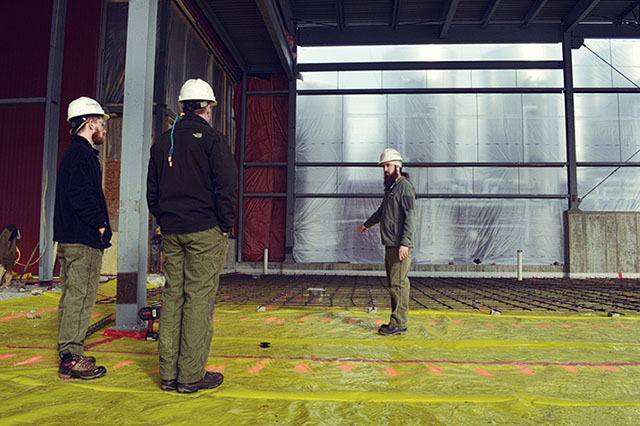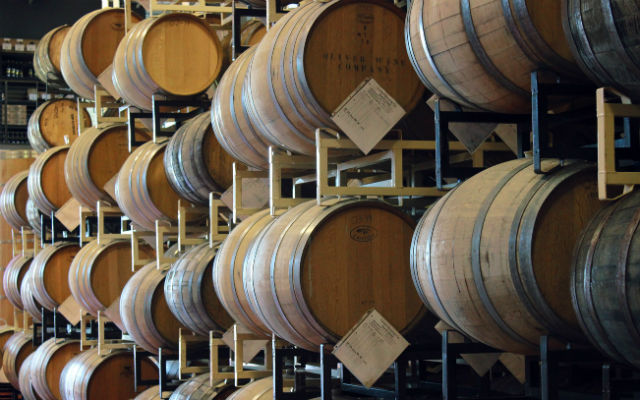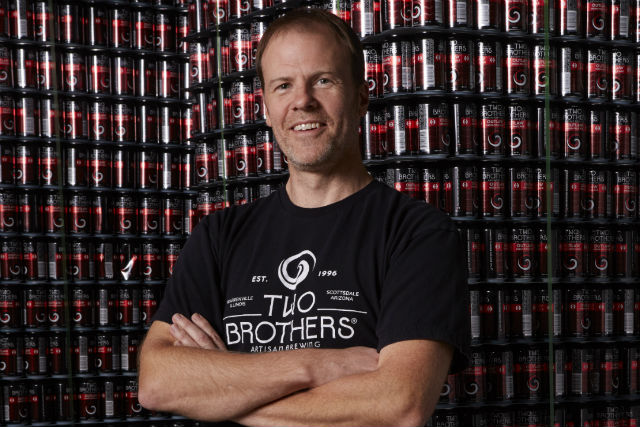
Working with vendors, contractors and a plethora of other professionals that may not understand fully the scope of what you as a brewer or decision maker wants out of a new facility can slow down projects or cause problems after the work is done.
“It’s been amazing to go from a feasibility study to see what this facility is capable of and talk it through as a company and take the next step,” Otter Creek Brewmaster Mike Gerhart told Brewer as the Middlebury, Vermont brewery wrapped up a new facility in 2016.
There’s many different materials used when it comes to creating a new facility or expanding on a current one. Finding those resources are only a part of the job.
Keeping on top of even minute details can be frustrating and time consuming, especially for those that just want to get beer made and out the door. But the effort spent planning, fretting and hand-holding can equal higher quality beer with more efficiency while reducing costs both upfront and down the road.
“It’s just like buying a car,” Gerhart said. “All cars you can put in drive and go from here to there but one can cost $10,000 and another $100,000, so at the end of the day they still do the same thing.”
Gerhart added that the focus constantly revolved around what would make the best beer. Not what looked the best or wowed people. The brewhouse, he said was “no showpiece.”
“That doesn’t add to the value of the beer that comes out of it,” he said. “We have everything in place that I as a Brewmaster requires in instrumentation, documents and control and process automation and control. But we did not go crazy.”
He also said the team wanted to take care of the brewery’s employees, which he considers family. That meant cutting back on “wants” which meant, for example, the conference room is just a table with chairs, nothing fancy. Instead, it sunk money into expanding its capabilities in the lab and a hop cooler for storage.
“We put the majority of our efforts on what will help us make more beer, but efficiently and at the same time we have got our family here to take care of as well,” Gerhart added. “What makes better beer trumped all the creature comforts. The conference room isn’t high-end, it’s a room with chairs and a table. That doesn’t make better beer, the brewhouse does. We tried to keep that hat on the entire time this process evolved.”
Gerhart said he was very hands-on in his role, from the development of plans, to layout, all the way to completion.
“It’s small things: ‘Where is the light switch and what is the cover of the back plate?,'” he recalled. “Those details, you will have 6,000 of them a day and those contractors want answers. If you aren’t thinking about it upfront, you will be in a very expensive situation because change orders cost money and that’s where it goes from X amount of dollars to X times three.
“You need to have your homework done because everyone you hire expects you to have it done.”
Surrounding yourself with a team that is vast and knowledgeable is helpful. As Gerhart pointed out, architects don’t make beer and brewers don’t build buildings.
“An engineer can get you there,” he said, “they can tell you how many BTUs you need in a boiler and an architect to help it look pretty and you can say it looks good, but it would suck to have to work there every single day.”
Gerhart wasn’t shy to say that breweries that think it can do construction on its own and act as its own general contractor shouldn’t do it.
“If you think you can do it on your own, you haven’t been doing this long enough to realize you can’t,” he said. “Especially if you need to have your day job and run the existing facility.”
He counter-pointed that by adding that just handing over ideas to a general contractor shouldn’t be done either.
“It goes to show you haven’t been doing it long enough either,” he said. “Even if you are paying someone to run this entire job, you still have to sit right next to them. You wait for them at the door in the morning and walk in with them and when they walk out for the day, you walk out with them.
“If they show up at 7, you are there at 6:50. If they leave at 4, you are leaving at 4:30. If you think you can hire someone to just make a dream brewery that you wanted and you will take the keys and make beer, you haven’t been doing this long enough.”




Your facility is the literal groundwork for your success! Construction, brewing equipment, logistics, delays – Put the work in, and you can set the framework for successful production!